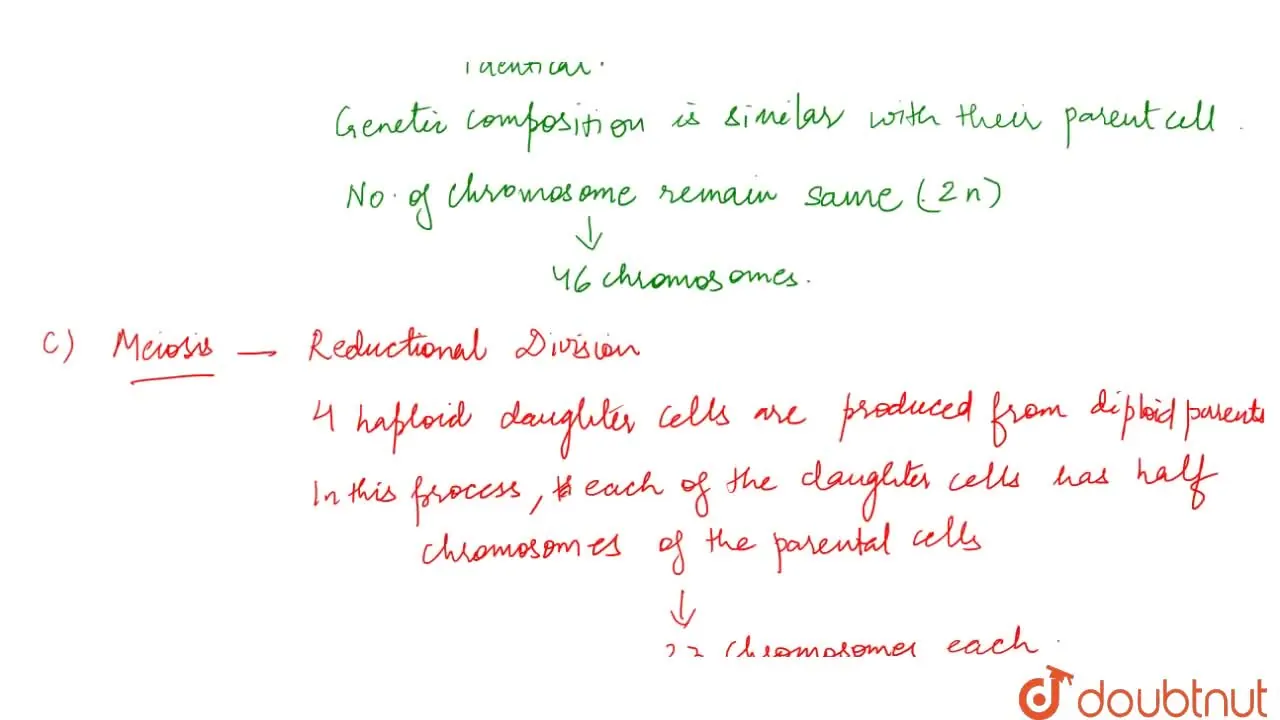CELL DIVISION (AMITOSIS ,MEIOSIS , MITOSIS)
Cell Division
In this chapter, we will learn about Cell Division. We will have a look at the different cell divisions which are Amitosis, Meiosis, and Mitosis. When a parent cell gets divided into two or more cells, cell division happens. The two or more cells are also called daughter cells. When it comes to the cell division, it occurs as part of a larger cell cycle. It is through splitting into two that all cells reproduce where each parental cell gives rise to two daughter cells.
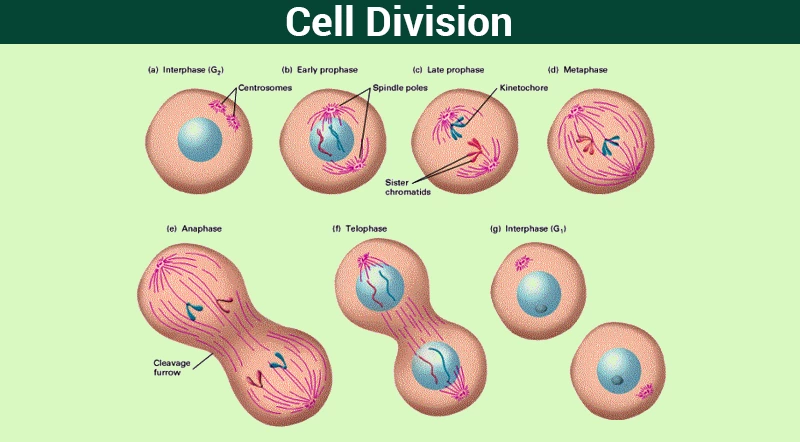
The daughter cells which are newly formed can divide and grow by themselves where it gives rise to a new cell population. This is formed with the help of the growth and division of a single parental cell as well as its descendant. Here single cells are allowed by such cycles of growth and division. So, it forms a structure that consists of millions of cells.
In order to get the right understanding of the types and phases of cell division, it is important to explore the cell division notes.
Types of Cell Division
Coming to the cell division, there are two distinct types- mitosis and meiosis. Mitosis is a vegetative division where the parent cells are duplicated by each daughter cell. On the other hand, meiosis divides into haploid daughter cells. Let us understand these cell divisions in detail.
1) Mitosis: These types of cells make exact replicas of themselves. It is almost all the body’s cells that mitosis is observed which includes skin, hair, eyes, and muscle cells. In order to successfully make the new diploid cells, there are several phases or steps of the life cycle which are interphase, prophase, prometaphase, metaphase, anaphase, telophase, and cytokinesis.
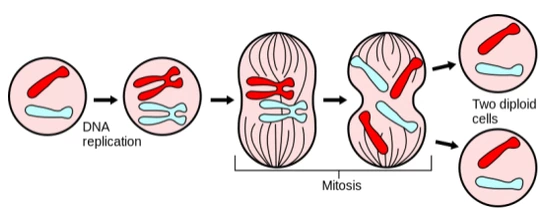
2) Meiosis: Here, instead of identical daughter cells, sperm or egg cells are produced. A small proportion of each chromosome breaks off during meiosis where it again reattaches to another chromosome. It is known as ‘genetic recombination’ or ‘crossing over’. It contains a unique set of genetic information in each new cell in meiosis.
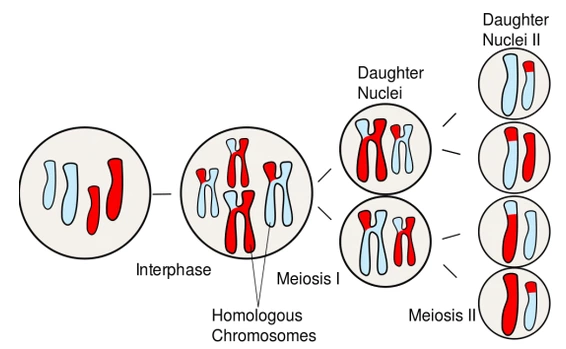
There are two main stages of division in the meiosis cell cycle -- Meiosis I and Meiosis II. The number of chromosomes gets halved by Meiosis 1 where crossing over happens. In Meiosis II, the amount of genetic information gets halved in each chromosome of each cell. It results to four daughter cells which are known as haploid cells. The cell goes through interphase before the start of the Meiosis 1. Just like in mitosis, the parent cell uses this time in preparing for the cell division which is done by gathering nutrients and energy and making a copy of its DNA.
3) Binary Fission: For the purpose of reproduction, single-celled organisms like bacteria replicate themselves.
Related Videos:
- Cell Cycle
- Phases Of Cell Cycle
- Meiosis and mitosis differ from each other because in meiosis
- Difference Between Mitosis And Meiosis
What are the Phases of Cell Cycle?
When it comes to the phase of Cell Cycle, there are two primary phases which are discussed below:
- Interphase: This phase means the resting stage between subsequent cell divisions. But according to the new research, it is shown to be a very active phase.
- M Phase (Mitosis Phase): M Phase is the one where the actual division occurs. Cytokinesis and kyrokinesis are the two key steps in this phase.
It should be noted that the interphase is further comprised into three phases:
- G0 Phase (Resting Phase): These types of cell neither divide nor prepare itself for the division.
- G1 Phase (Gap 1): The cell happens to be metabolically active where growth is seen continuously during this phase.
- S phase (Synthesis): During this stage, the DNA replication or synthesis occurs.
- G2 phase (Gap 2): In this phase, protein synthesis happens
- Quiescent Stage (G0): There are cells that do not undergo further division. So, these cells exit the G1 phase and then enter an inactive stage. This stage is called the quiescent stage (G0) of the cell cycle.
There are four stages that are seen in the M Phase, which are:
Important Chapters:



Similar Questions
Go through the following statements.
I. Meiosis is similar to mitosis
II. Terminalization of chiasmata occurs in meiosis -II.
III. Meiosis -II performs separation of homologous chromosomes.
IV: Interphase is intermitosis.
V. After mitosis, the number of chromosomes in daughter cells shall-one fourth of parent cell.
Pick up the correct statementsView SolutionCell Cycle and Cell Division A. Mitosis Stages and Importance B. Meiosis Stages and Importance.
View SolutionCell division is tightly regulated. Which of the following is TRUE regarding mitosis OR meiosis?
I. Mitosis shows no homologue pairing
II. There is no S phase between meiosis I and II
III. Meiosis centromeres do not divide at anaphase I.View Solution9. Cell Division - Meiosis I -Prophase I
View Solution[A]: Meiosis II is not mitosis.
[R]: Meiosis II occurs in cell with haploid chromosomesView SolutionBest Trick To Learn Cell Cycle (Mitosis & Meiosis) | NEET 2020 | Mnemonics
View SolutionThe given below figure shows a generalized life cycle of a fungus. The suitable terms for A,B,C,D and E are
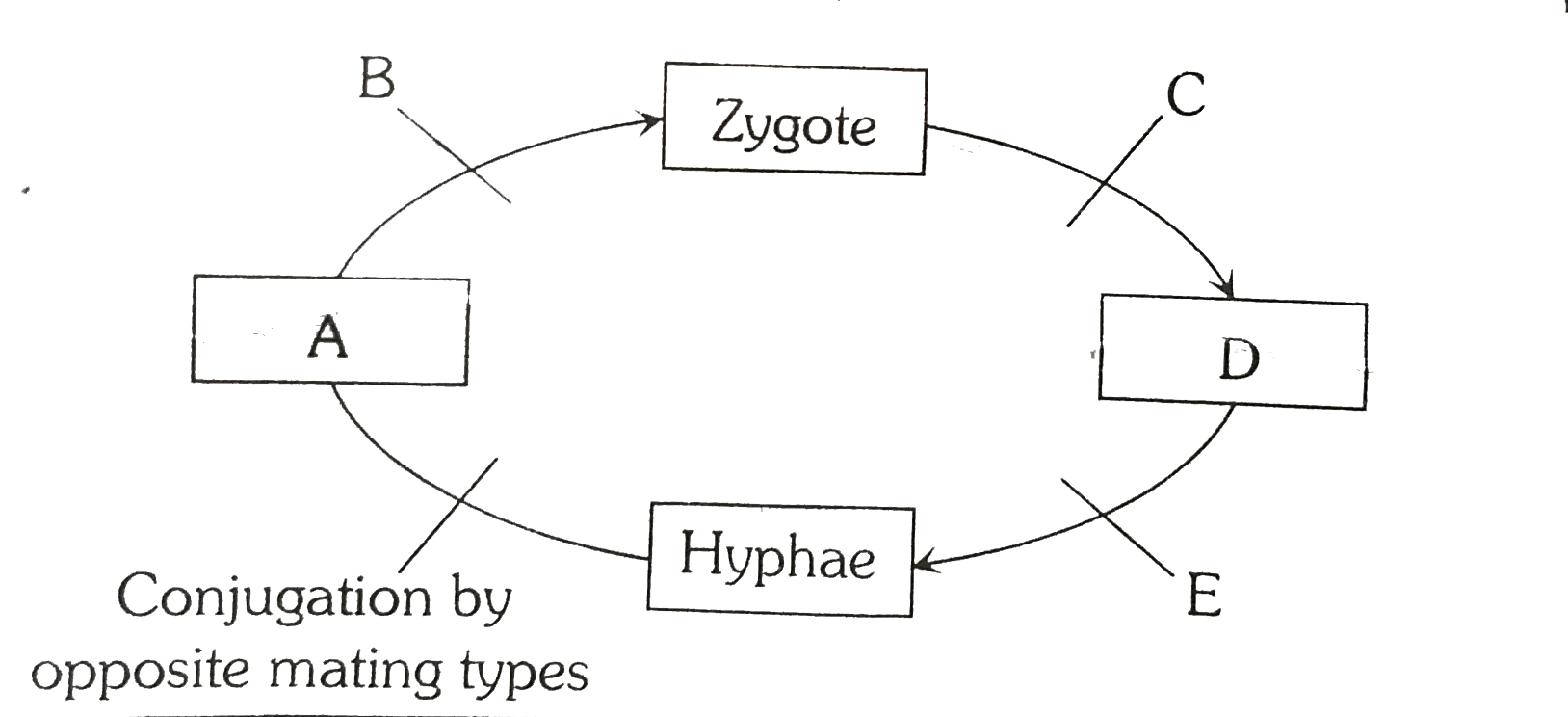
ABCDE(a)MeiosisMitosisSporeFertilizationDikaryotic phase(b)Dikaryotic phaseFertilizationMeiosisSporeMitosis(c)FertilizationMeiosisMitosisDikaryotic phaseAmitosis(d)MyceliumMitosisMeiosisFertilizationSporeView Solution10. Cell Division - Meiosis I - Crossing Over And Chromosomal Recombination
View SolutionMitosis ( Mitotic Cell Division)
View SolutionIntroduction|Basis Of Cell Division|Types Of Cell Division|Types Of Cell Division - Amitosis|Phases of Cell Cycle|Phases of Cell Cycle - Interphase|Cell Cycle
View Solution

